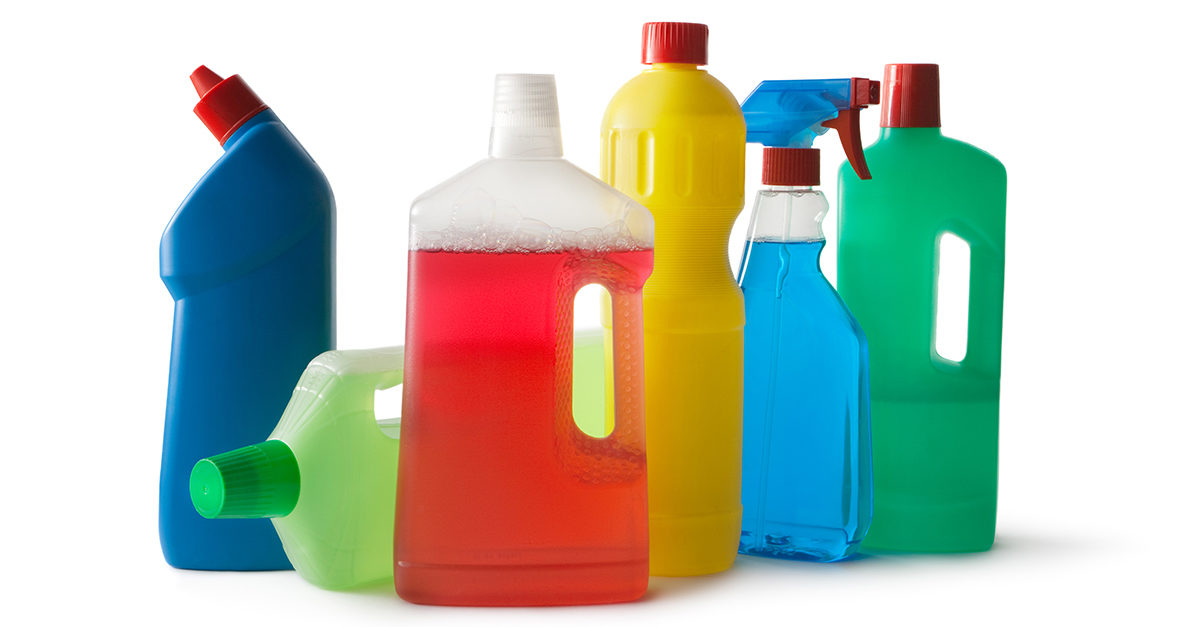Historically, professional cleaners have used diverse protocols to clean, sanitize, and disinfect each aspect of a facility. Add mold remediation, odor control, and other tasks to the list and the prospect of success was even more daunting. Implementing separate procedures for every need usually leads to employing a range of specialized chemicals, making it easy for facility managers to lose control of the numerous products cluttering housekeeping closets. Now that we’ve entered the new normal, there are even more considerations for addressing COVID-19, creating further chemical confusion.
Chemistry mixes create challenges
Cleaning a facility often involved numerous chemicals, including neutral floor cleaner, general hard-surface disinfectant, sporicidal, bleach, food-safe sanitizer, mold remover, odor eliminator, and more. Managing labels, safety data sheets, usage guidelines, and expiration records for all these products required countless hours, and requires even more with the addition of coronavirus.
To complicate matters, each chemical is applied differently and often requires dilution. Some facilities use dilution stations for full-concentrate chemicals. This approach raises various concerns, mainly human or equipment error. Sometimes leftover chemical in the lines, material wear on components, and changes in water pressure can lead to wide variations in the concentration of the chemicals dispensed from these units. At times these variations can render the disinfectant ineffective for its intended purpose.
Some of the most widely used chemicals can be toxic to humans and/or the environment at different concentrations. Other disinfectants may lose their effectiveness if mixed at the wrong concentration.
Facility managers already had complex jobs, compounded by time limitations, labor issues, worker safety, and budget restrictions but now pandemic concerns are added to the mix. If managers don’t find ways to simplify current cleaning processes, their facilities may face increased health, safety, and compliance issues.
Streamline cleaning chemistries
You may be wondering how it’s possible to replace the multitude of specialized chemicals used to clean and disinfect a typical facility. In recent years, a chemistry composed of sodium dichloroisocyanurate (NaDCC) has shown promise as a streamlined solution. NaDCC is available in tablet concentrate form and, when mixed with normal tap water, creates hypochlorous acid (HOCI) solutions.
NaDCC is a noncaustic, organic chlorine donor. It is environmentally safe for people, equipment, and floors, and as a flexible, broad-spectrum disinfectant can be used throughout the cleaning process. When diluted at different strengths, NaDCC can act as sanitizer, hospital-grade disinfectant, sporicidal, or tuberculocidal. This multipurpose solution allows facilities to use one chemical from the beginning to the end of the cleaning process, and everything in between.
Eliminating a half-dozen chemicals from individual cleaning protocols would simplify processes and improve workflows. In addition to higher efficiencies, chemical simplification would result in various other benefits.
Realize higher safety levels and savings
Standardizing processes around one broad-spectrum chemistry can increase safety for all stakeholders, as well as protect equipment and the environment, in the following ways:
- It can eliminate potential failure points caused by human error. Instead of multiple safety
practices, chemical usage guides, and dwell times, one chemistry with one set of directions for every stage of the cleaning process would take the guesswork out of cleaning and disinfection. - The quick-dissolving tablet concentrate ensures an accurate dilution and helps prevent the risk of mixing mistakes.
- HOCI produced by NaDCC is rated 0,0,0 by the National Fire Protection Association (NFPA), which presents a less hazardous alternative to some of the more corrosive sporicidal grade chemicals used today.
- With a pH of 6.5 – 7.0, NaDCC exhibits good surface compatibility and won’t damage equipment or dull floor finishes.
- Some of the ways facilities may benefit by consolidating their chemical cleaning products to one solution include:
- Savings on shipping and storage costs by switching to a tablet concentrate from liquid concentrate
- Savings on product costs as HOCI solutions are effective at low concentrations, requiring less frequent purchasing
- Decrease in chemical waste due to dilution stability and up to 60% less chemical usage per square foot with electrostatic sprayers
- Lower labor expenses due to higher productivity and performance
- Less costs from infectious outbreak losses.
Be more effective in less time
At sporicidal strength, NaDCC is proven to kill C. difficile in 4 minutes, is on the U.S. Environmental Protection Agency (EPA) list K of recommended products by the U.S. Centers for Disease Control and Prevention (CDC) for C. auris, etc., and on list N of antimicrobials with emerging viral pathogen claims that are approved for use against SARS-CoV-2, the virus that causes of COVID-19. The chemical equilibrium of an NaDCC-derived hypochlorous acid solution is approximately 50/50 free chlorine/bound chlorine. When the solution is in the presence of microbes or organic material, the free chlorine is used up, triggering the release of more free chlorine to restore equilibrium. Therefore, a reservoir of chlorine is available for biocidal action, or reserve killing power, that continues for up to three days after mixing.
Switching to NaDCC tablet form also allows facilities to leverage new electrostatic technologies. Electrostatic sprayers are capable of up to 10-times faster application times and virtually 100% wrap-around disinfection, which has been a game changer for every sector of the cleaning business.
This efficient application process can make it tempting to use more chemicals. However, when used responsibly, these new technologies will reduce the amount of chemicals needed to clean and disinfect while achieving improved outcomes.
Simplify compliance management
Standardization of cleaning and disinfection processes also can solve many compliance concerns. Levels of compliance are directly proportional to cleaning success. Best practices include consolidating around a universal disinfectant that achieves maximum safety and efficacy and eliminates persistent industry risks, like chemical binding. Less chemical variation also leads to better tracking and monitoring, as well as simpler training programs that can be easily replicated and scaled, which is crucial in an industry where multilingual staff and high turnover are prevalent. The end goal is to improve outcomes and raise levels of compliance.
The cleaning industry embraces reinvention. Revamping for improvement involves streamlining processes, starting with the chemicals we use. Ultimately, these streamlined processes can result in more efficient and effective sanitation, increased compliance, and proactive prevention of contagious outbreaks like COVID-19.




